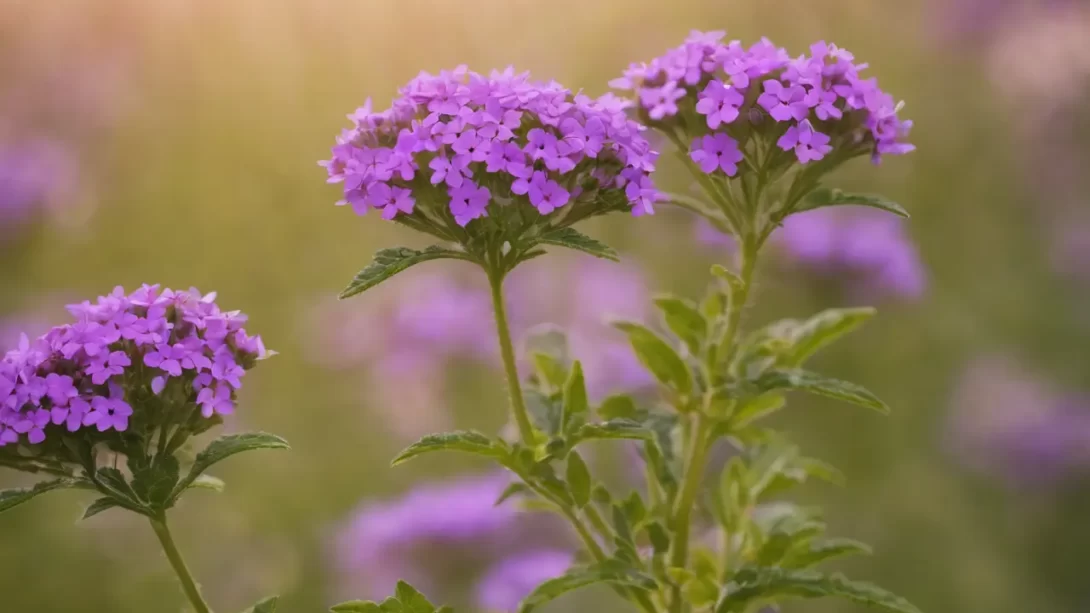Verbena, a staple in many gardens, is cherished for its vibrant colors and enduring blooms. An essential aspect of caring for verbena is deadheading, a simple yet crucial process for extending the blooming period and maintaining plant health. This article will guide you through the process of deadheading verbena, explaining why it’s important and how to do it effectively.
Verbena
Verbena plants, with their array of types and growth habits, are known for their ability to produce a profusion of flowers. From ground-covering varieties to those that grace garden borders and hanging baskets, verbenas are versatile and visually striking. The practice of deadheading plays a pivotal role in encouraging verbena plants to produce more blooms and can help in preventing diseases and promoting a well-maintained appearance.
What is Deadheading?
Deadheading refers to the removal of faded or dead flowers from a plant. This process is not just about aesthetics; it serves a practical purpose in gardening. For flowering plants like verbena, deadheading is essential for encouraging further blooming. When old blooms are removed, the plant redirects its energy from seed production to flower development, leading to more vibrant and prolonged flowering.
Deadheading is often confused with pruning, but they are different practices. Deadheading involves removing only the spent flowers, while pruning is about cutting back portions of the plant to shape it or promote healthy growth.
When to Deadhead Verbena
The timing of deadheading verbena is crucial for its effectiveness. Generally, you should deadhead when you notice that the flowers are fading and losing their vibrant color. This often occurs after a flush of blooms has been out for a while and they begin to wither.
Seasonally, verbena may require more frequent deadheading during peak blooming periods, typically in the spring and summer. Paying attention to the lifecycle of the plant’s blooms will guide you in deciding when to deadhead.
Tools Needed for Deadheading Verbena
For deadheading verbena effectively, the right tools are essential. The most commonly used tools are:
- Pruning shears or scissors: Ideal for making clean cuts without damaging the plant.
- Garden gloves: To protect your hands, especially if you have sensitive skin.
- A container or basket: To collect the spent blooms and dispose of them properly.
It’s important to use tools that are clean and sharp. This ensures a clean cut that heals quickly and reduces the risk of disease.
Step-by-Step Guide to Deadheading Verbena
Deadheading verbena is a straightforward process, but doing it correctly is crucial for the health of the plant. Here’s how to do it:
- Identify the Spent Blooms: Look for flowers that are wilting, fading in color, or have already dried up.
- Locate the Right Spot: Find the base of the spent flower stem, where it meets the main stem or a set of healthy leaves.
- Make the Cut: Using your pruning shears or scissors, snip the stem of the spent flower. Make the cut at a 45-degree angle, close to the base of the flower stem, but be careful not to cut the new buds or leaves.
- Repeat the Process: Continue this process throughout the plant, removing all the dead or fading flowers.
- Dispose of Spent Blooms: Collect the cut flowers in your container and dispose of them to prevent any disease from spreading.
Aftercare Following Deadheading
Once you have deadheaded your verbena, a few aftercare steps can promote healthier growth:
- Watering: Ensure the plant is adequately watered, especially during dry periods, as verbena prefers consistently moist soil.
- Fertilizing: Applying a balanced fertilizer can provide essential nutrients to support new growth.
- Monitoring for New Growth: Keep an eye on your verbena for new flower buds. Regularly check for and deadhead any new spent blooms.
Common Mistakes to Avoid
Deadheading verbena, though simple, can sometimes go awry if not done correctly. Here are some common mistakes to watch out for:
- Cutting Too Much: Avoid cutting back too much of the plant or removing healthy buds. Focus only on the dead or dying flowers.
- Not Using the Right Tools: Blunt or dirty tools can harm the plant and make it susceptible to diseases. Always use sharp, clean shears or scissors.
- Overlooking Disease Prevention: After deadheading, it’s wise to check for signs of disease or pests. Quick identification and treatment can prevent larger problems.
- Ignoring Regular Maintenance: Regularly inspect your verbena plants for spent blooms. Consistent deadheading encourages more flowering.
Conclusion
Deadheading is an essential practice for maintaining the health and beauty of verbena plants. By regularly removing spent blooms, you encourage the plant to produce new flowers, leading to a more vibrant display throughout the growing season. Remember to use the right tools, make precise cuts, and provide appropriate aftercare to ensure your verbena plants thrive.
This practice not only enhances the aesthetic appeal of your garden but also contributes to the overall well-being of your plants. With these tips in mind, gardeners of all levels can successfully deadhead verbena and enjoy the lush, colorful blooms that follow. So, grab your gardening tools and give your verbenas the care they need to flourish.




